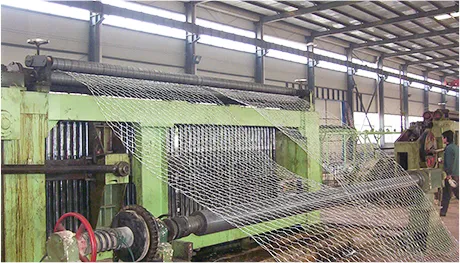-
 Phone:
Phone: -
 Email:
Email:

rockfall net
Understanding Rockfall Nets An Essential Tool for Landslide Mitigation
Rockfalls are among the most hazardous geological phenomena, posing significant risks to infrastructure, human life, and the environment. As urban development encroaches on mountainous terrains, the need for effective measures to mitigate these risks has become increasingly critical. One of the most effective solutions is the application of rockfall nets.
Rockfall nets are specialized systems designed to catch and stabilize falling rocks. They are typically composed of high-tensile steel wire and are engineered to absorb impact and prevent boulders from reaching vulnerable areas, such as roadways, buildings, or populated regions. These nets are strategically installed in areas known for rockfall activity, such as steep slopes, unstable cliffs, and other geological formations prone to erosion and collapse.
The design of rockfall nets varies based on the specific requirements of a site. Factors such as the potential size and speed of falling rocks, the slope angle, and the surrounding environment all influence how the net is configured. Advanced modeling techniques and engineering assessments help determine the most effective placement and tensioning of the nets to ensure they withstand the forces exerted by falling debris.
One of the primary benefits of rockfall nets is their ability to provide a relatively low-impact solution for rockfall mitigation. While traditional methods such as blasting or heavy excavation might disrupt the landscape and ecosystem, rockfall nets can be installed with minimal environmental interference. They often blend seamlessly with the natural surroundings and can be implemented without significant alterations to the terrain.
rockfall net

Additionally, rockfall nets serve as a proactive measure to control rockfalls before they cause damage
. By containing falling rocks, they protect essential infrastructure, ensuring that highways, railways, and tourist areas remain safe and accessible. This preventive approach not only saves lives but also reduces economic losses associated with road closures and accident-related damages.The installation of rockfall nets is often part of a broader strategy to manage geological hazards. Alongside other techniques, such as vegetation planting, drainage enhancement, and the use of rock bolts, these nets contribute to an integrated risk management approach. This collaboration of methods creates a more resilient landscape capable of withstanding natural forces.
Despite their proven effectiveness, the maintenance of rockfall nets is crucial. Regular inspections are necessary to ensure that the nets remain intact and functional. Tension adjustments might be needed over time due to weathering or the accumulation of debris. Engaging local communities in monitoring and maintaining these systems can foster a sense of ownership while enhancing safety awareness.
As climate change intensifies geological activity, the importance of rockfall nets will only grow. With increasing rainfall events and the potential for more significant geological shifts, these nets will become vital in safeguarding vulnerable areas and populations. Investment in research and development of more advanced materials and designs will further enhance the efficacy of rockfall mitigation strategies.
In conclusion, rockfall nets are an essential tool in the arsenal of geotechnical engineering solutions. By offering a protective barrier against falling rocks, they provide safety and security to communities residing near steep terrains. As we face the challenges posed by nature, harnessing innovative technologies such as rockfall nets will play a crucial role in creating safer, resilient environments for future generations.
-
Wire Mesh for Every Need: A Practical SolutionNewsJul.25,2025
-
Steel Fences: Durable, Secure, and Stylish OptionsNewsJul.25,2025
-
Roll Top Fencing: A Smart Solution for Safety and SecurityNewsJul.25,2025
-
Cattle Farm Fencing Solutions for Maximum SecurityNewsJul.25,2025
-
Affordable Iron Binding Wire SolutionsNewsJul.25,2025
-
Affordable Galvanized Wire SolutionsNewsJul.25,2025
-
Wire Hanger Recycling IdeasNewsJul.25,2025








